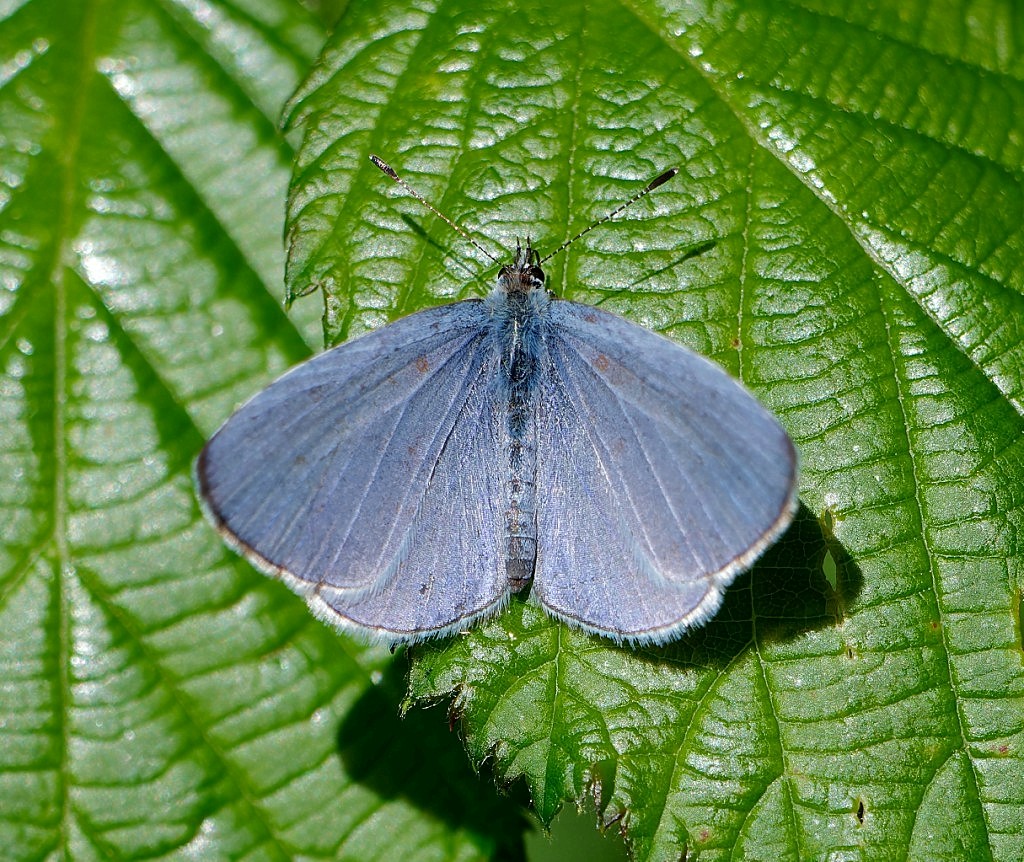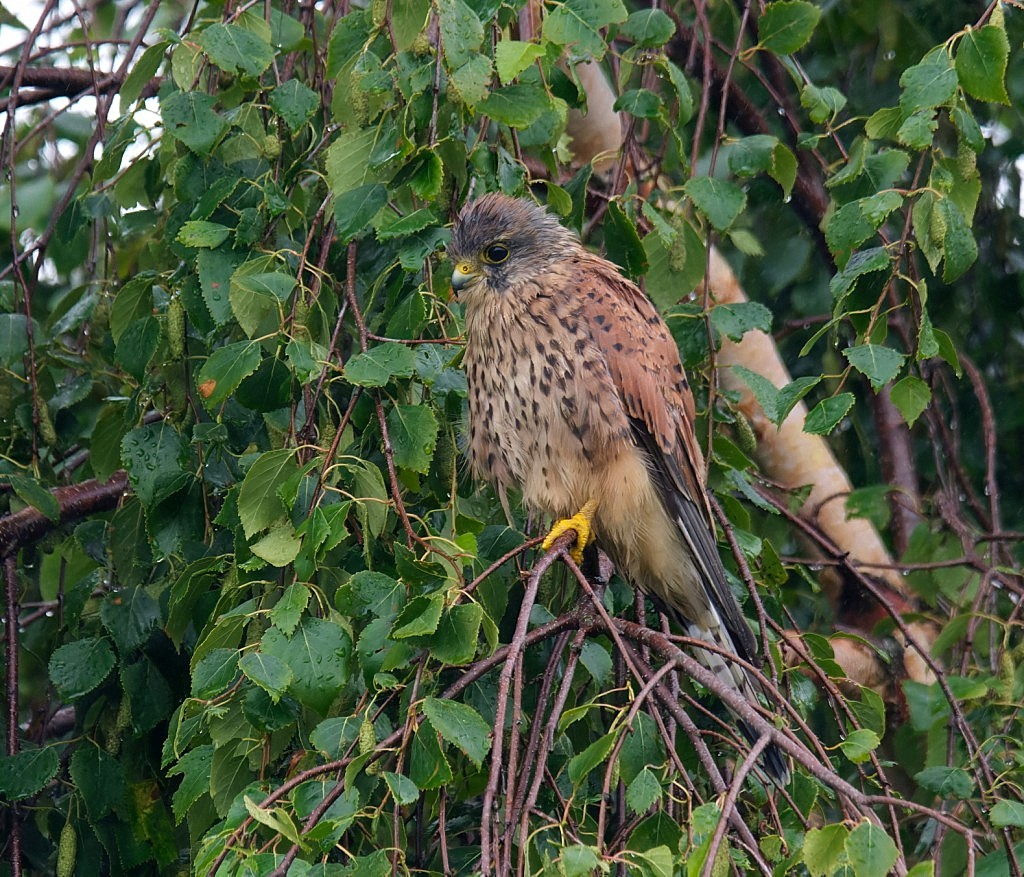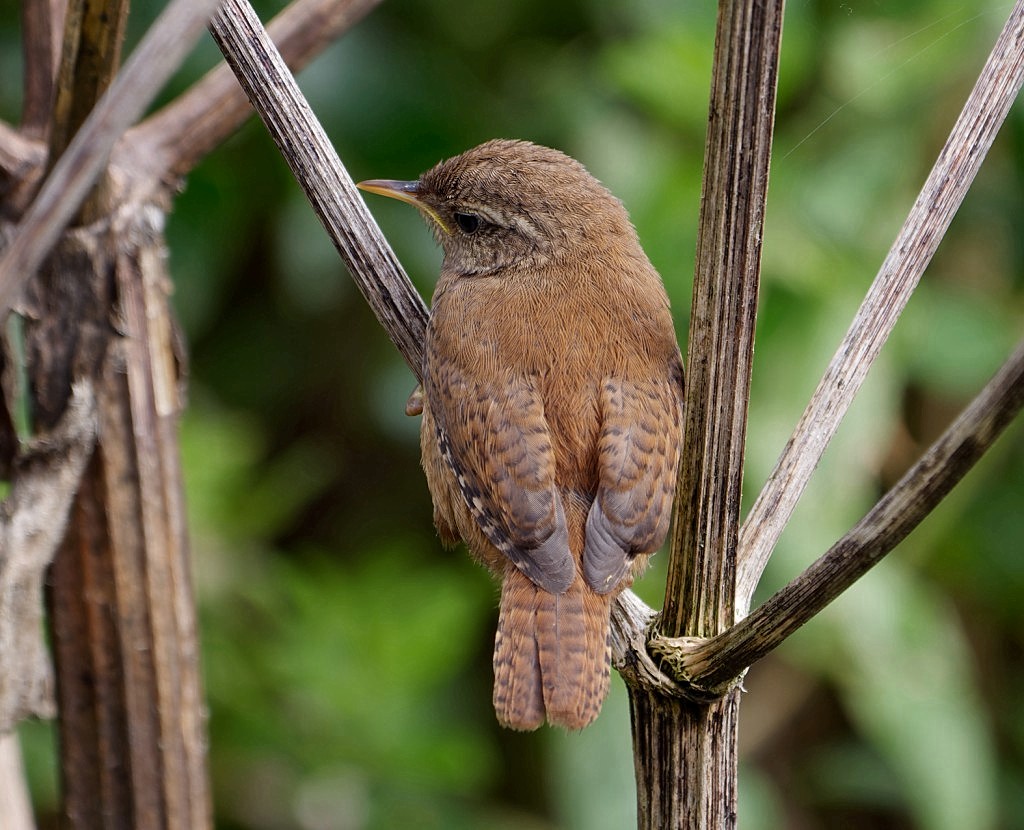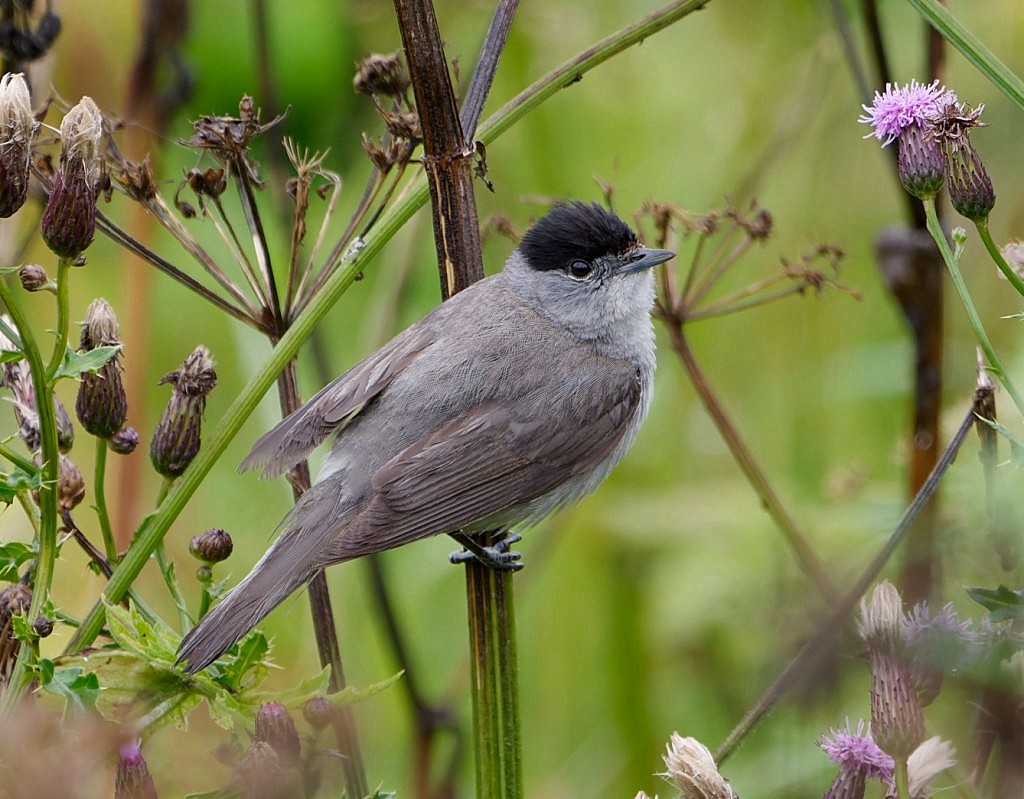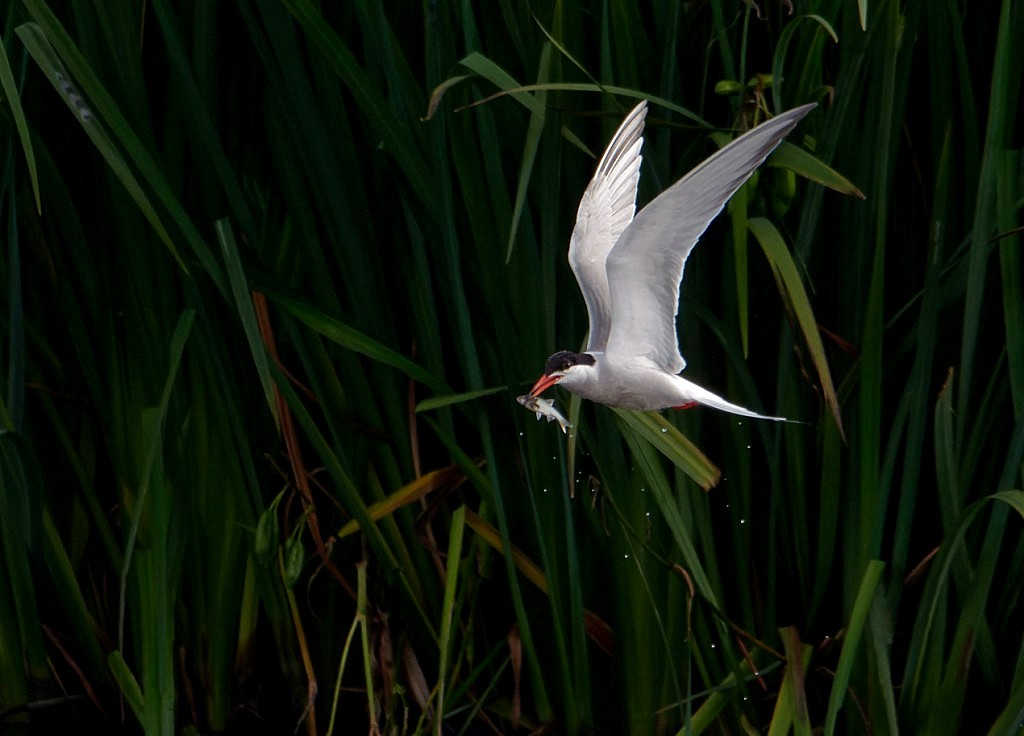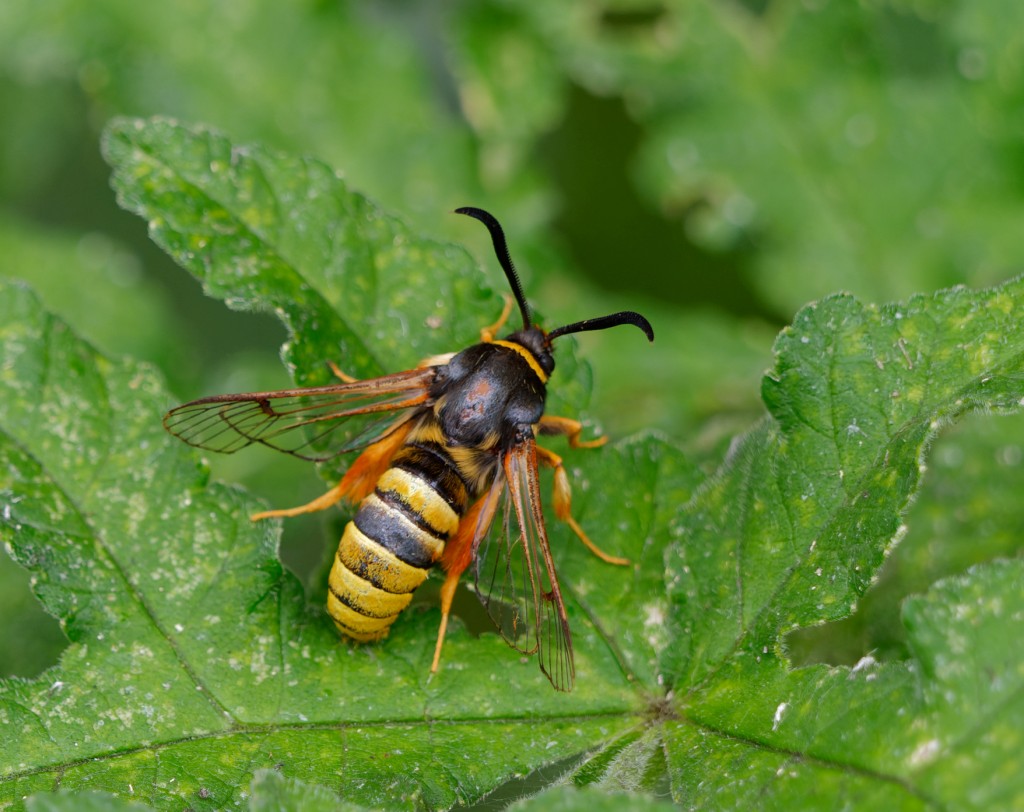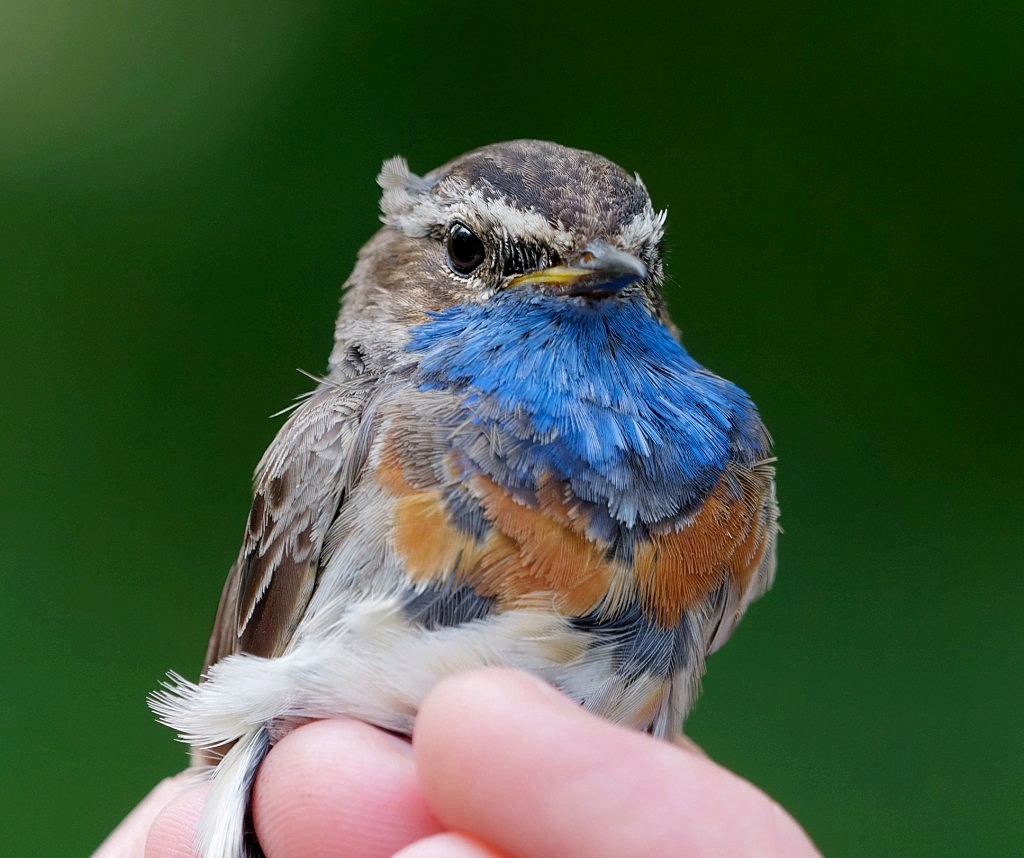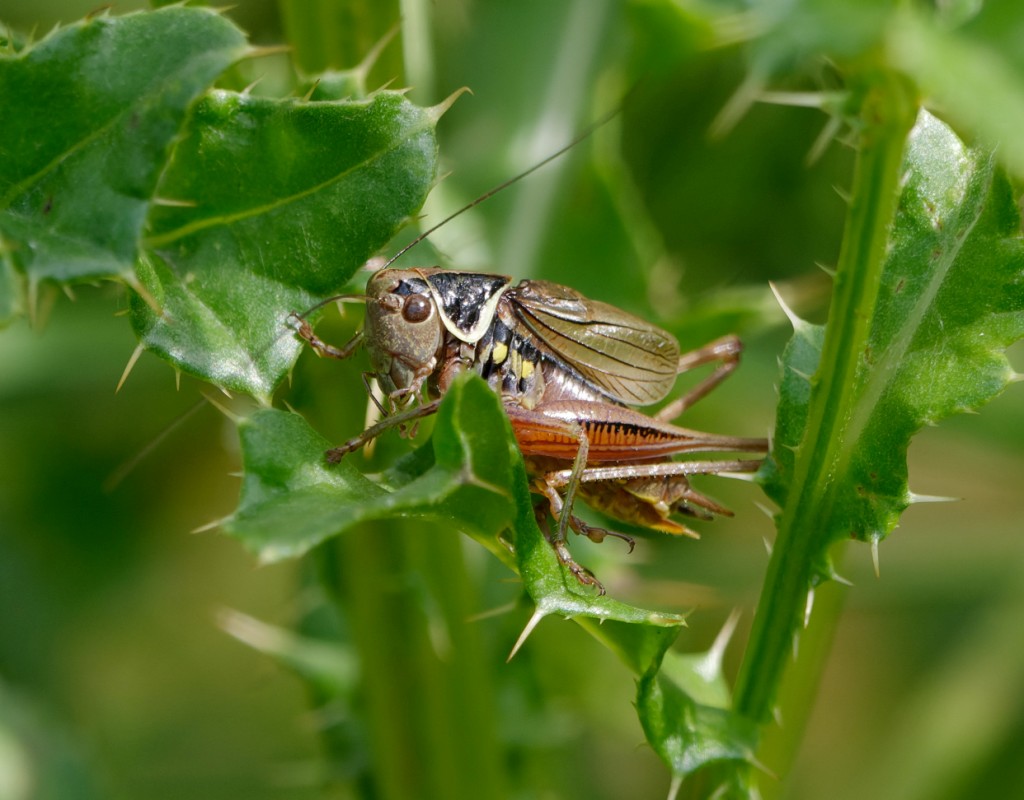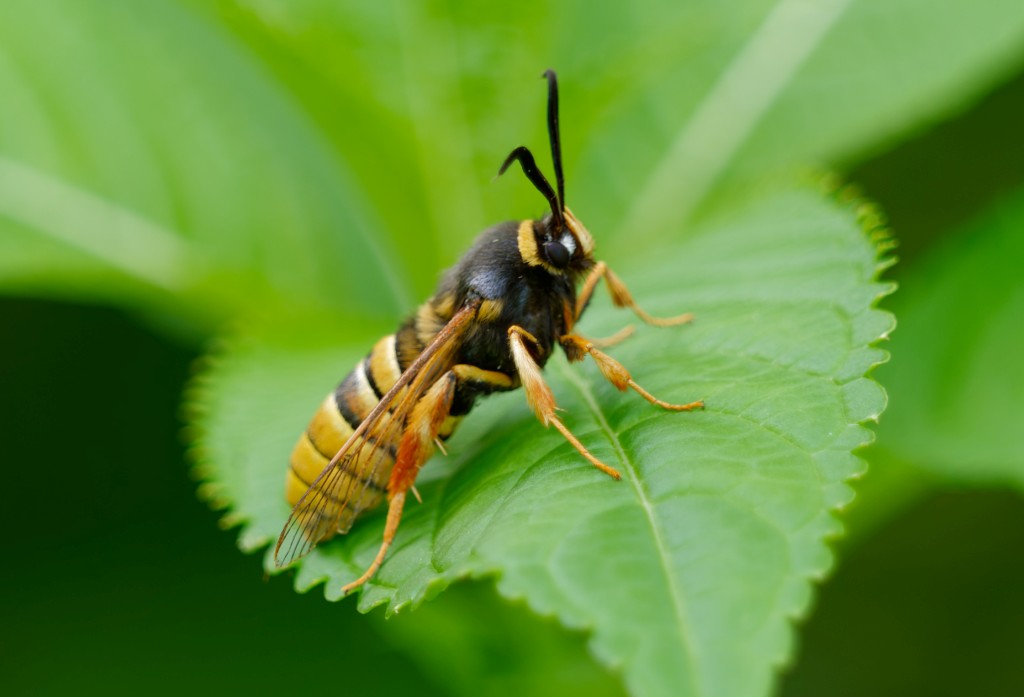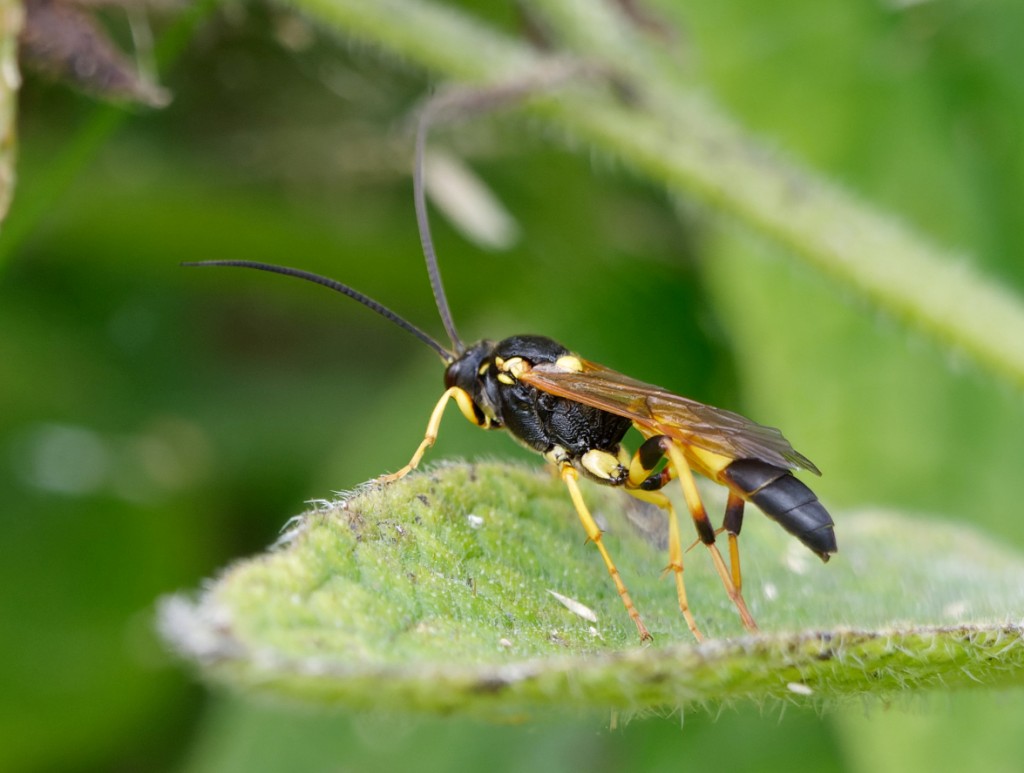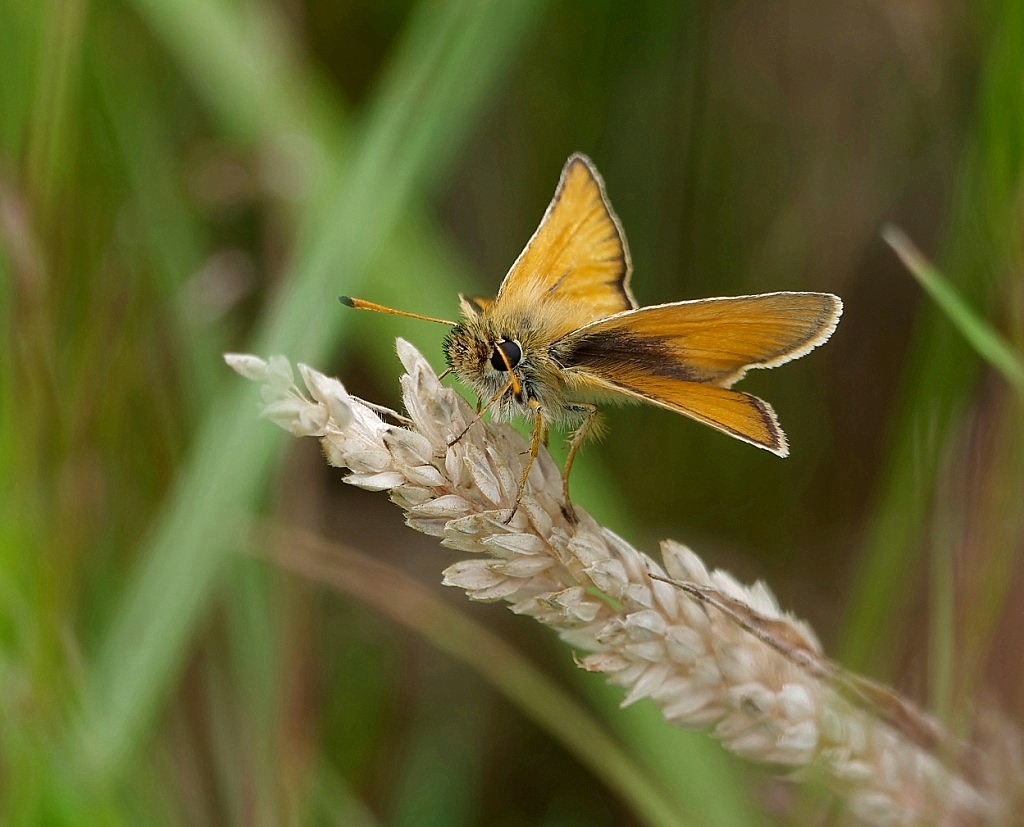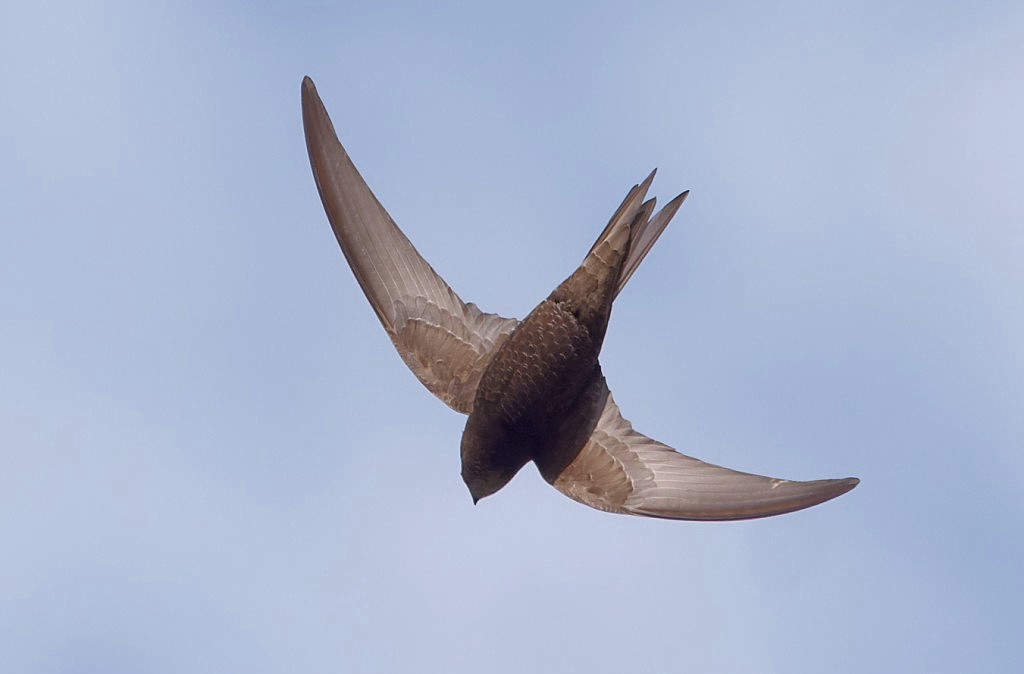Woolston Eyes Monthly Sightings
2023-07-29
It was a blustery morning, with the odd shower and some dramatic skies. Pick of the birds from No.3 bed were the five Green Sandpipers which were in front of the Morgan Hide, the four Black-tailed Godwits which also dropped in and the two regular Common Terns. Although the weather wasn’t ideal, because of the wind, we spent the latter part of the morning doing some butterfly and dragonfly counts on the No.4 bed track, trying to make up for all the survey time lost to rain so far in July. Before that, a single Painted Lady on No.3 bed was the third of the week. Counts from No.4 bed included: 1 Holly Blue, 6 Peacocks, 7 Speckled Woods, 14 Small Whites, 2 Large Whites, 5 Red Admirals, 3 Gatekeepers, 5 Brown Hawkers, 13 Common Darters and 9 Ruddy Darters. Photo of a Holly Blue Cheers David Bowman (with Helen Wynn, Brian Baird, Dan Owen and George Dunbar)
Submitted by: David Bowman
2023-07-27
It was another morning of intermittent drizzle, in what is proving to be a very wet July. Nevertheless, there were a few waders moving, with 2 Dunlin, 1 Redshank, 3 Common Sandpipers, 4 Green Sandpipers and an Oystercatcher on No.4 bed, before I decided to run for cover to the Morgan Hide in No.3 bed. A single summer-plumage Black-tailed Godwit was feeding in front of the hide and the two regular Common Terns were again catching small fish and displaying. During the worst of the conditions 140 Swifts dropped in to feed low over the water, along with a handful of Swallows. Photo of a Kestrel Cheers David Bowman
Submitted by: David Bowman
2023-07-25
It was a morning of sunshine and showers, with another excellent breeding season slowly drawing to a close. A 17th brood of Black-necked Grebes was a great find, along with one more brood of Tufted Ducks and two of Little Grebe. Return wader passage should be in full swing soon, too, with the 5 Green Sandpipers and 3 Dunlin hopefully just a taste of what is to come. Thinking of the longer term future, at least a couple of Common Terns have been present on and off throughout the breeding season. Today, two adults were catching lots of small fish right in front of the Morgan Hide, before displaying on the gull-nesting rafts. Having added Marsh Harrier to our breeding list relatively recently, it remains an ambition to see a Common Tern colony established before too long. Competition for limited nesting space with Black-headed Gulls has, we think, prevented this happening so far but the number of new islands on the No.4 bed wetland might well rectify this. We’ll see. Other notable sightings included 3 Garganey, a Hobby, Garden Warbler and plenty of other warblers feeding in front of the Morgan Hide, with Reed Warblers, Sedge Warbler, Whitethroats, Blackcap and Chiffchaffs all showing well. Photo of a Common Tern Cheers David Bowman (with Dan Owen)
Submitted by: David Bowman
2023-07-18
This morning skies were overcast with the threat of drizzle and not much sign of movement, other than a a flock of 50 Swallows moving west and a lone Common Tern passing over. There was plenty of breeding activity, though, with warblers feeding young all around Nos.3 and 4 beds, Kingfishers becoming more evident now that their young have fledged, including one perched in front of the Morgan Hide, our breeding female Marsh Harrier hunting actively now that her two young have fledged and a juvenile Water Rail scuttling across in front of the Morgan Hide. No sign of Saturday’s White-spotted Bluethroat, though. Although conditions were cooler than at the weekend, when we managed to attract 10 Lunar Hornet Moths to a pheromone lure, we were again successful at another census point on No.3 bed, when two more came rapidly to the lure. It’ll be interesting to see whether this attractive wasp-mimic, which is scarce and difficult to see, is present on all four beds, given how effective the lure is proving to be. The final noteworthy event occurred when Dan managed to catch and ring an adult Greylag Goose, only the second ever for the Reserve and the third for the Merseyside Ringing Group. Photo of a Lunar Hornet Moth Cheers David Bowman (with Dan Owen
Submitted by: David Bowman
2023-07-15
Our ringing teams work hard throughout the year, monitoring our bird populations in a way which would be impossible by purely visual observation. They also provide key data to the national BTO database, which enables population trends to be estimated and thus give early warning of any potential declines. Already this year, around 2,200 birds have been ringed on Nos.1 and 3 beds, with the peak periods for ringing still to come. Every now and then our teams’ efforts are given an extra frisson of excitement when something special turns up in their nets. Last year, the highlight was a Penduline Tit on No.3 bed and today Kieran Foster was thrilled to find a male White-spotted Bluethroat in one of his nets on the same bed. This race of Bluethroat breeds in southern and central Europe and winters in Africa. Intriguingly, this individual was in heavy wing and tail moult, so probably hadn’t come from too far away and might well stay until its moult is complete, before heading south to its wintering grounds. This is only the second record of White-spotted Bluethroat for Cheshire and the Wirral and yes, you guessed it, the first was also from Woolston, being ringed on No.1 bed in July 1996! Photo of the Bluethroat Cheers David Bowman (with Dan Owen and Helen Wynn)
Submitted by: David Bowman
2023-07-13
A muggy, high summer’s day started with plenty of good birds and finished with a couple of nice surprises. The best of the early action was on No.4 bed, where a couple of Little Egrets, 4 Green Sandpipers, 15 Black-necked Grebes, a family party of 3 Ravens and at least 10 Garganey were the highlights. Also of note was a single, worn Ringlet around The Loop. Over on No.3 bed, records included 2 Common Sandpipers, 4 more Garganey, Hobby, Garden Warbler and Marsh Harrier, with the best still to come. Over the past week or so, sharp-eared Dan Owen has heard the distinctive reeling sound of a couple of the scarce Roesel’s Bush-cricket, a species which is of a southerly distribution but has been steadily moving northwards, though still scarce in Cheshire and is a first for the Reserve. Today, he managed to track one down, a male, which we managed to see well and photograph. Then we moved on to moths! Clearwing moths are a family of day-flying moths, which mimic wasps to avoid predation and which are both scarce and very difficult to see. In 47 years on the Reserve, I’ve only managed to see two - one each of Lunar Hornet Moth and Red-tipped Clearwing. They do, however, come easily to pheromone lures, something we’ve been meaning to do for ages. Today we finally did it and were blown away when 10 Lunar Hornet Moths came rapidly to the lure. Given that they breed in stands of Willow and Sallow, which are extensive here, who knows how large our population might be? Photo of a Lunar Hornet Moth Cheers David Bowman (with Dan Owen)
Submitted by: David Bowman
2023-07-11
The bread and butter of these late summer day is the monitoring of breeding success for our waterfowl. It really has been an outstanding year, with the new No.4 bed wetland coming on stream and with records set for many of our scarce/uncommon species. Broods counted so far include: 15 Black-necked Grebe, 4 Shoveler, 35 Pochard, 21 Tufted Duck and at least 20 Gadwall. Garganey have also bred successfully again, a fact reflected in today’s record count of 16, which may also be a record for Cheshire and the Wirral. The icing on the cake, though, at this time of year comes from the passage waders, which are always good to see at an inland site. While there was no sign of Sunday’s summer plumage Spotted Redshank, we did record Ruff, 3 Green Sandpipers, Little Ringed Plover, Common Sandpiper, Snipe and Oystercatcher, with a Black-tailed Godwit dropping in after we’d left. Yellow Wagtail and Meadow Pipit hinted at the start of passerine passage and soon we’ll be looking for Tree Pipits and hoping that, like last year, the odd Water Pipit or Rock Pipit might turn up, too. Photo of an Ichneumon Wasp Cheers David Bowman (with Dan Owen)
Submitted by: David Bowman
2023-07-08
It’s been quite a week, starting with two new species for the Reserve, with David Spencer finding two Essex Skippers and Dan Owen a Roesel’s Bush Cricket. Both are southern species which have started moving north as the climate has warmed and both remain scarce in Cheshire. So, the morning’s plan was to start with some bird counts before seeing if we could relocate the skippers. The 14 Garganey present across the Reserve is a record for us and must be among the highest ever Cheshire counts, too. The moulting flock of Gadwall continues to build and the partial count of 850 is starting to approach the record of 1,016. After an inauspicious start, due to Avian Flu hitting our Black-headed Gull colony hard, it has turned in to an exceptional breeding season, with a 14th brood of Black-necked Grebes appearing, along with a 34th of Pochard. The latter represents at least 5% of the UK breeding population. Other sightings included: Green Sandpiper, Common Sandpiper, Little Ringed Plovers and Common Tern, We then shifted our attention to butterflies on No.2 bed and managed to find 3 Essex Skippers, 1 Purple Hairstreak (a first for this bed), 66 Gatekeepers, 14 Small Skippers, 11 Commas, 6 Red Admirals and 1 Small Tortoiseshell, plus a Six-spot Burnet Moth. Photo of an Essex Skipper Cheers David Bowman (with Dan Owen, Helen Wynn, Kelly Ainsworth, Sue Haddock and Brian Baird)
Submitted by: David Bowman
2023-07-04
July is the month when we first start to see waders returning from their northerly breeding grounds, whether stopping to feed or just passing over. The weather this morning was hot, with a westerly breeze, after over-night rain and a nice trickle of waders was the main interest. On No.3 bed, 1 Green Sandpiper, 1 Redshank, 3 Black-tailed Godwits and 4 Oystercatchers were in front of the Morgan Hide, while over on No.4 bed 3 Whimbrels flew through, a solitary Curlew was feeding on the east cell of the new wetland and 2 more Oystercatchers dropped in. There was, though, no sign of the Ruff which has been around for the past few days.
Photo of a Swift
Cheers David Bowman
Submitted by: David Bowman

